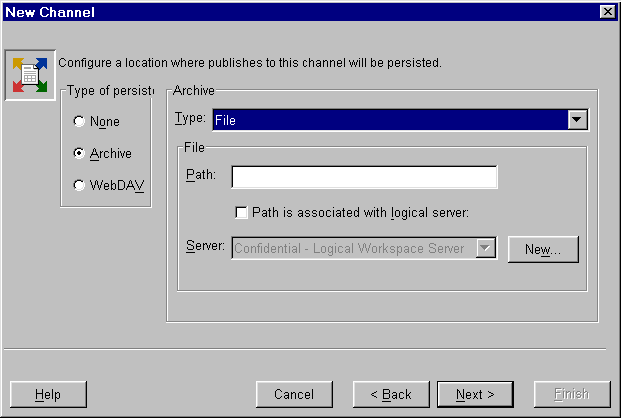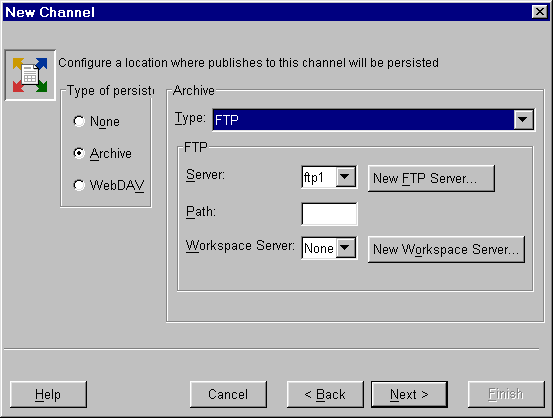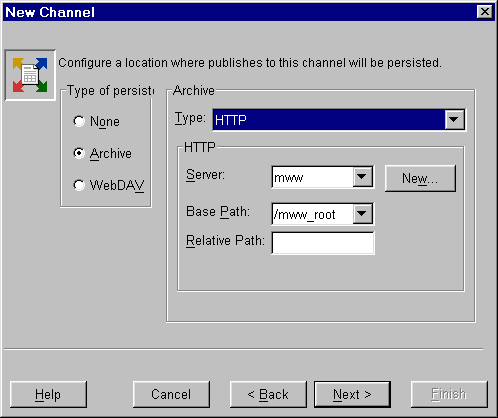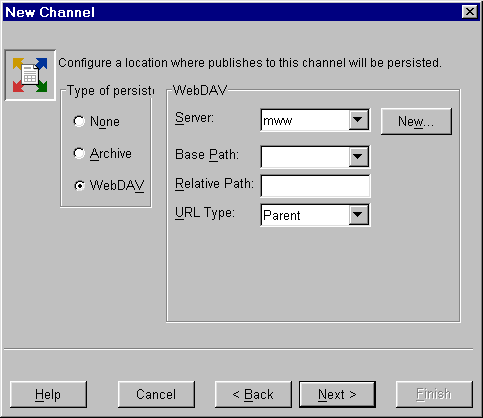SAS 9.1.3 Integration Technologies » Administrator's Guide
|
Publishing Framework
Persistent StoresA channel can be defined to have a persistent store. A persistent store is a location where published content is permanently stored (or persisted). The Publishing Framework publishes the content to the persistent store location, and then publishes the content to the subscribers. This section describes each of the available persistent store options and their attributes. Note: To persist content on a secured WebDAV server, or to an archive path that as defined as a secured HTTP or FTP server, the publishers might need credentials on that server. See Publishing to Secure Servers for details. You can choose the following persistent store options:
NoneIf you do not specify a persistent store for a channel, then all content that is published on that channel is published directly to the subscribers and is not persisted. Archive Persistent StoresWith an archive persistent store, the Publishing Framework publishes the
content as an archive (binary FileFor an archive persistent store that is defined as a physical file location, you must specify a file path. You can optionally associate the file path with a logical server if you want to be able to retrieve the archive file from a remote host. 
FTP ServerFor an archive persistent store that is defined as an FTP server, you must specify the name of the FTP server. You can optionally specify a path within the FTP server and a logical workspace server. The Publish Service component of the SAS Foundation Services needs an IOM Workspace server defined in order to publish an archive to an FTP location or to delete a file from an FTP location. 
HTTP ServerFor an archive persistent store that is defined as an HTTP server, you must specify an HTTP server and base path. You can optionally specify a relative path. The base path and relative path are combined to form the URL of the location where the archive is persisted. 
WebDAV Persistent StoreFor a WebDAV persistent store, you must specify a WebDAV-enabled HTTP server and base path. You can optionally specify a relative path. The base path and the relative path are combined to form the URL where the WebDAV collection is persisted. You also must specify a URL type of either Collection or Parent:

See AlsoAdministering HTTP Servers and WebDAV in the SAS Integration Technologies: Server Administrator's Guide. |